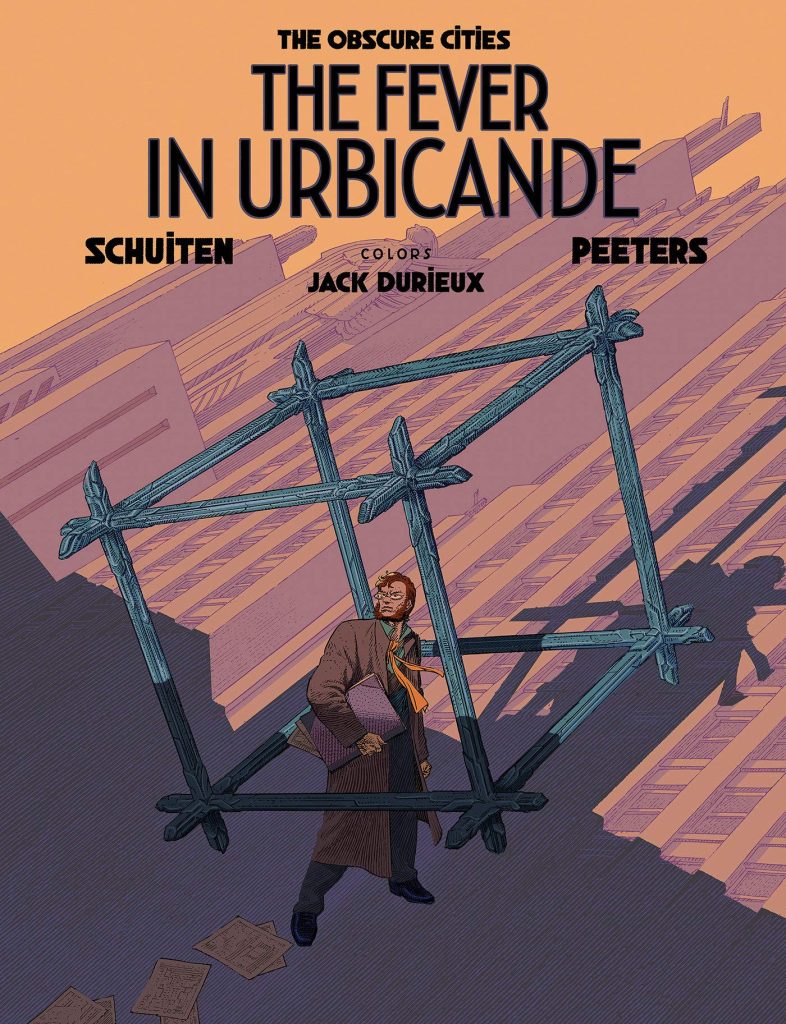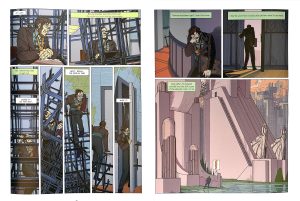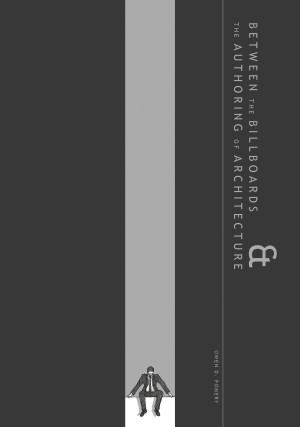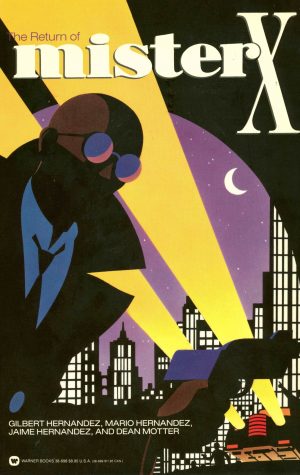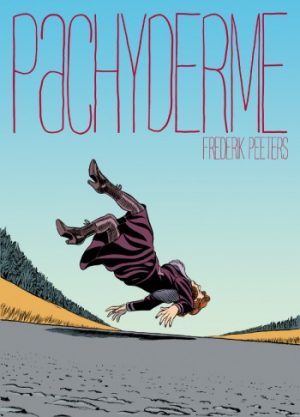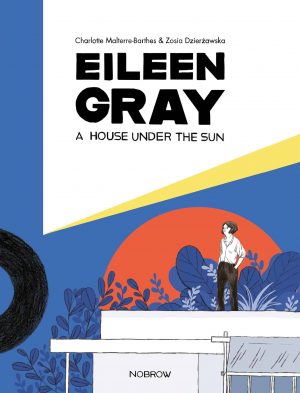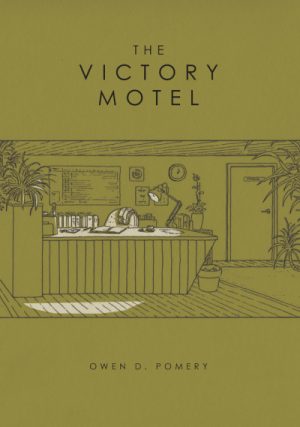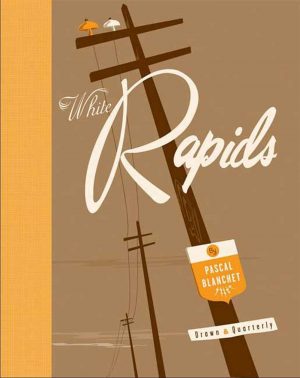Review by Woodrow Phoenix
The Fever in Urbicande (La Fièvre d’Urbicande) is the second book in the ‘Obscure Cities’ series by artist François Schuiten and writer Benoît Peeters. In its original form Fever in Urbicand won Best Album at the 1985 Angoulême Festival. This new edition with its slightly different title has been revised as the art has been coloured, the text has been newly translated and relettered. Schuiten and Peeters had initially intended this story to be in colour, just as with Samaris, the first volume of their ‘Obscure Cities’, but as they worked on the story it began to expand beyond the original page count. Their publisher had a limit of 48 pages for producing books in the colour album format so the 94-page Fever in Urbicand appeared in black and white instead, with Schuiten adjusting his drawing from the second chapter onwards adding the shadows and atmospheric crosshatching that are now his characteristic style.
Schuiten and Peeters often tweak their books in between reprintings to add or revise a page here and there. Schuiten coloured a couple of pages from this story for an exhibition and eventually they decided to ask designer Jack Durieux to colour the whole thing for a new edition. The afterword for this book ‘The Colours of Urbicande’ has commentary from both Peeters writing about the book’s first appearance, with some rarely seen images from Schuiten, and then from Jack Durieux on the process of working on such a cult favourite. There is also a page of roughs for the cover of the first edition, and a screenprint from 1985. The black and white Fever in Urbicand was perfectly readable, but this new colour version definitely improves the narrative experience. Durieux’s subtly modulated shading and use of colour holds to separate background and foreground adds a depth and clarity to the art, making it easier to look at – no small thing when the drawings are as detailed as Schuiten likes to make them.
The story itself is unaltered. Eugen Robick is the most successful and accomplished of all the Obscure Cities’ protagonists. As Urbatect, a cross between an architect, town planner and politician he has designed the entire city of Urbicande, a Frank Lloyd Wrightian and Corbusian mix of towering structures, wide avenues, dramatically immense Art Deco statuary and sweeping public squares. His design diktats stretch to interior design, furniture and even the clothing of those who live in the city. His masterplan won’t be complete until he builds one last bridge across the river to connect the north bank of Urbicande to the neglected south side, but an unusual cube is discovered during construction of another project and brought to him. It throws everything into chaos when it begins to grow, becoming large enough to engulf all of Urbicande in a grid of unbreakable metal.
Robick is a deeply rational and professorial type, who has nothing in his life except work. His lofty detachment somehow makes him captivating to his neighbour Sophie, an attractive woman intrigued by his asceticism, but we are mostly spared the risibly one-sided sex scenes found in other stories in this series. The many unanswered questions about the city and how it functions don’t detract from The Fever in Urbicande as the most well-realised of Schuiten and Peeters’ books, with a strong, memorable premise, enhanced by the addition of colour. If you are familiar with the previous version you will be surprised by differently it reads now.
